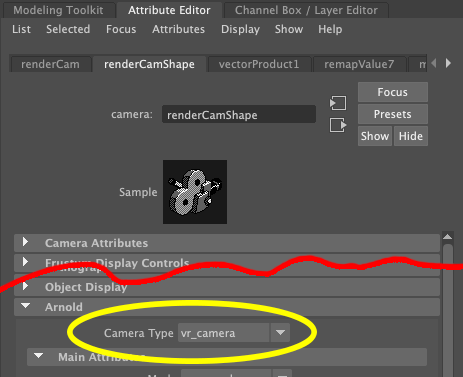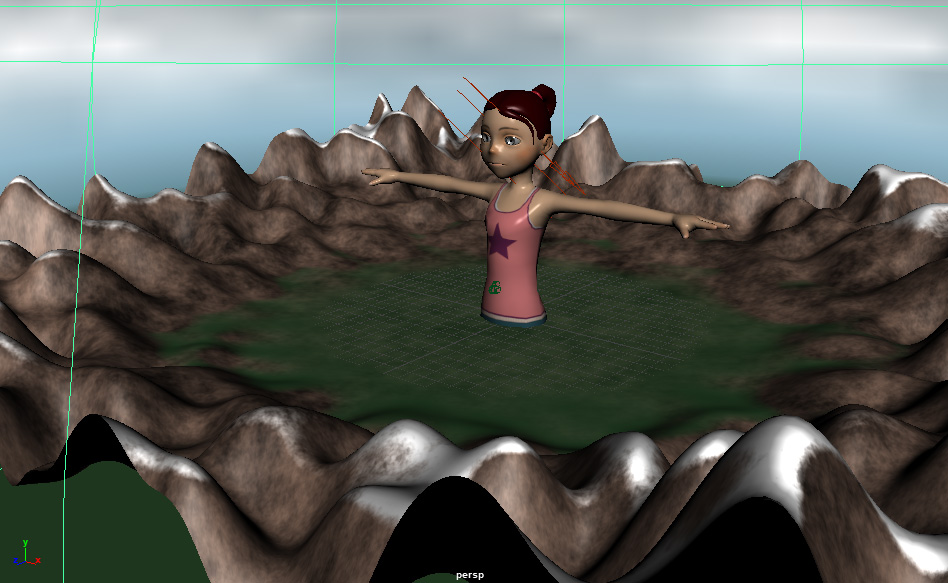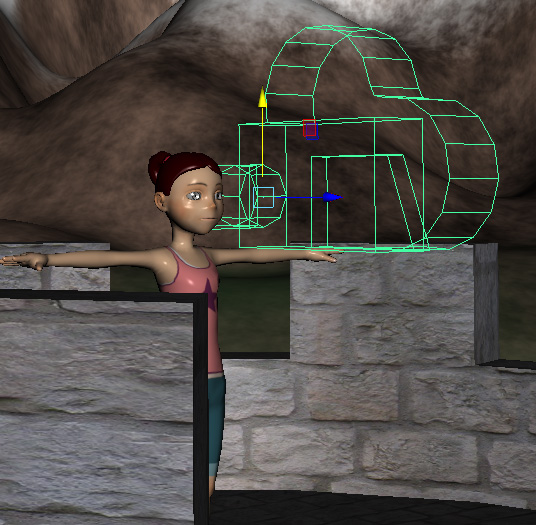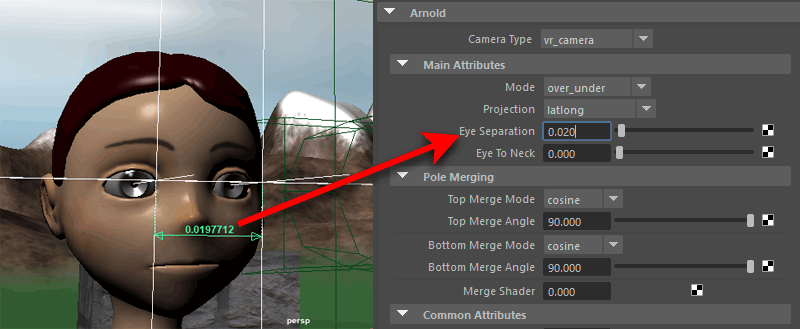
Arnold has a special camera that can render a stereoscopic 360 degree view of your scene that can be used in VR.
You place a regular camera in the right spot, and make it an Arnold VR Camera (vr-camera)
This setting can be found in the camera shape node, under Arnold.
A Quick and Dirty instruction video is posted at the bottom of this article.
Placing the Camera
The camera should be placed at eye level, that is: the estimated eye level of the user in VR, which differs depending on whether this is supposed to be viewed standing of while sitting down. In this example we assume the VR user will be standing.
Camera should be placed at eye level. The average height of U.S. Adults (age 20+, CDC) is 175.7 cm (5 ft 9 in) for men, and 161.8 cm (5 ft 3 1⁄2 in) for women.
You can use a reference character to estimate scale, Andy for instance.



Using the reference, you can now place a regular perspective camera at eye level. Do not rotate the camera in X or Z, both X and Z rotation should be 0 (zero)
Where the camera is pointing determines the initial view if the resulting 360 render is played in a regular (360 capable) video player, or on YouTube. It also determines where the seam in the render will be, namely right behind the camera. There should not be a seam in the 360 render but sometimes this is visible.
Under the Arnold settings in the Camera’s Shape node, set the Camera Type to vr_camera (See top of post)
Setting Eye Separation
You want to set the Eye Separation in the Arnold vr_camera settings to the correct size for the scene, this determines how big or small the scene will appear in VR. Wider eye separation makes the scene appear to be smaller.

VR Camera Settings
These settings depend on what the render will be used for. The over_under Mode works well for VR and is also what YouTube expects (left eye above the right eye) in the latlong Projection (a.k.a. equirectangular)

Tower intentionally missing as that is to be real-time rendered in VR
Happy Rendering!
The images should be rendered at at least 2K resolution, better is 4K, and 8K is excellent. Expect long render times for these rather big images.
